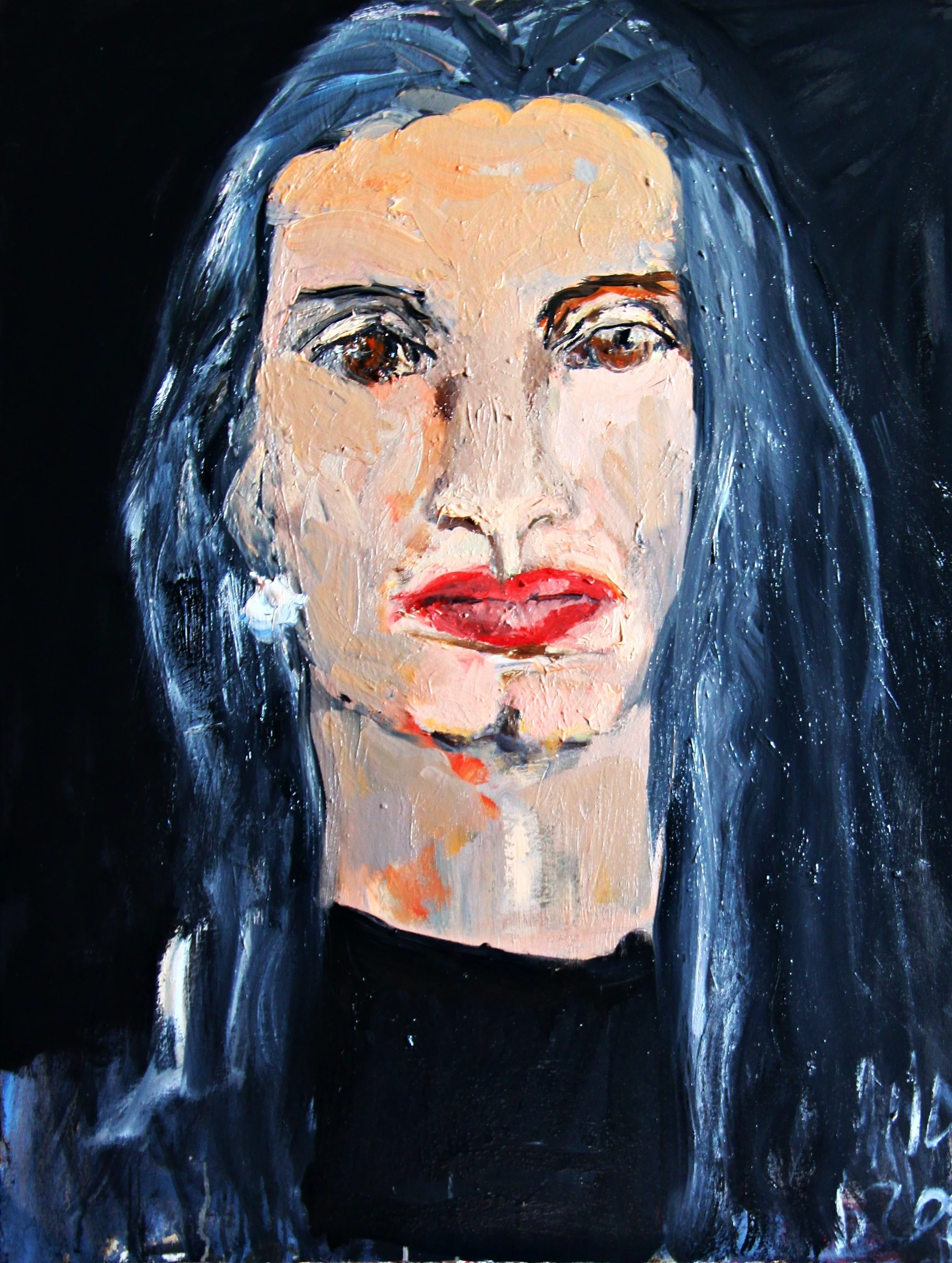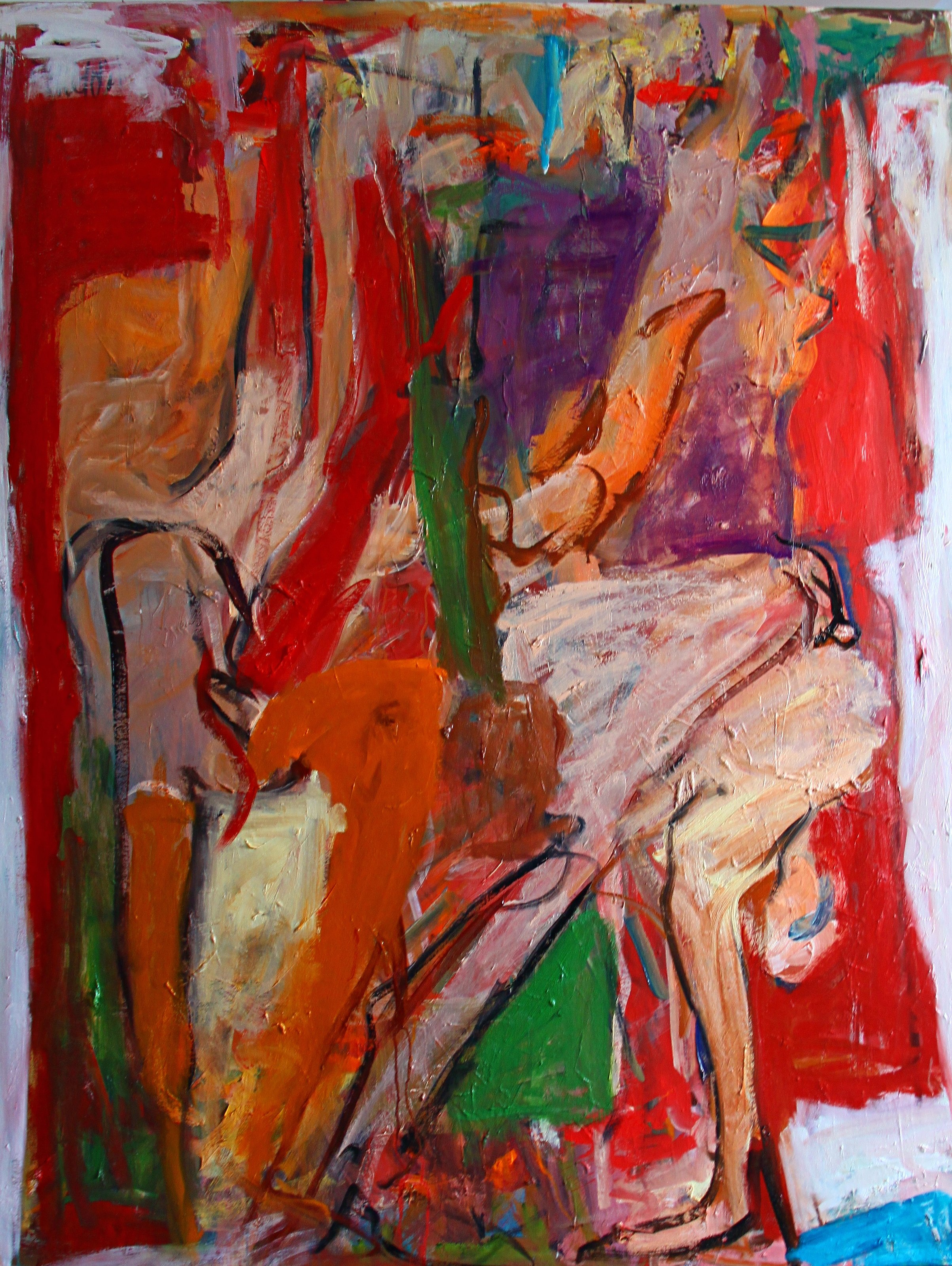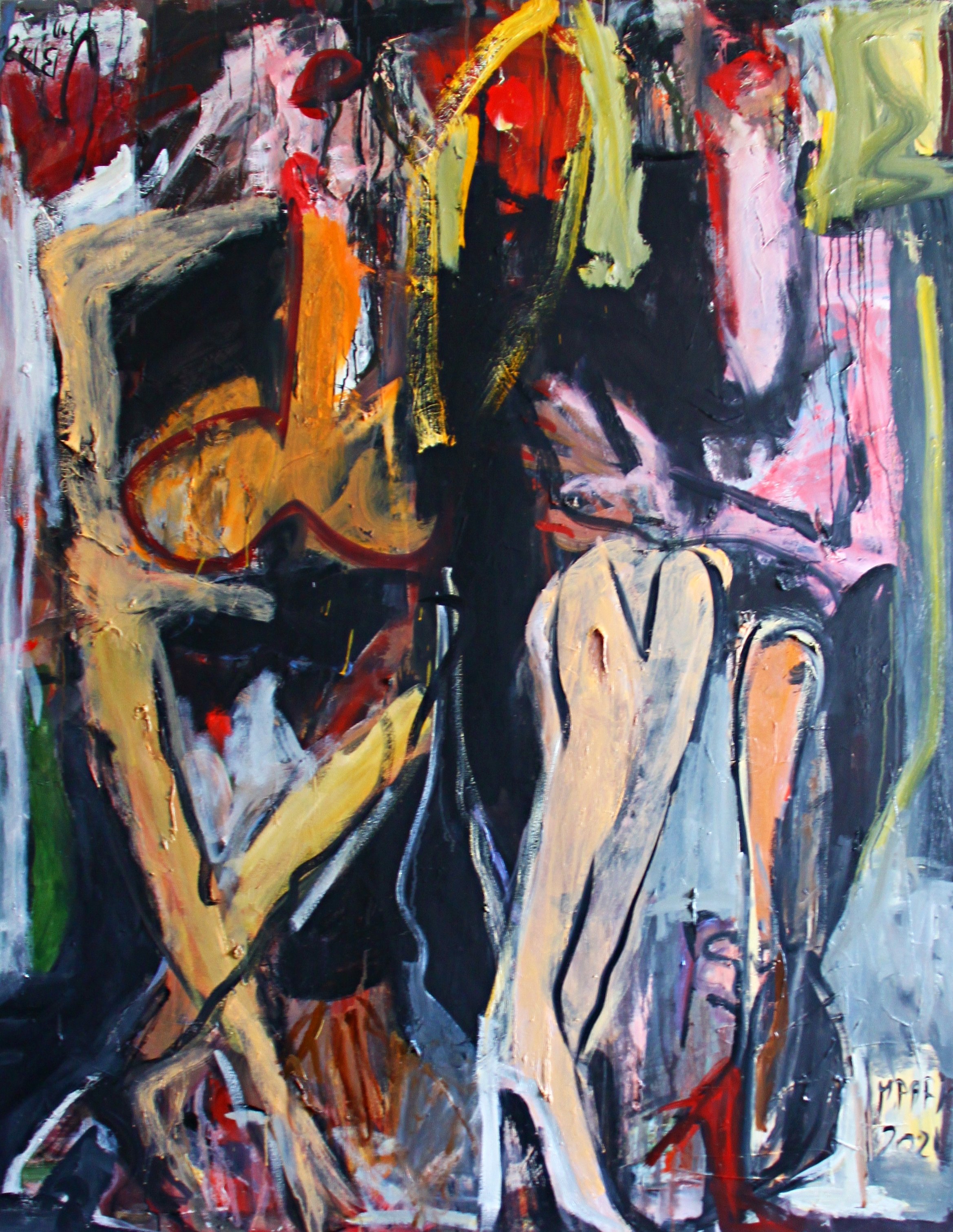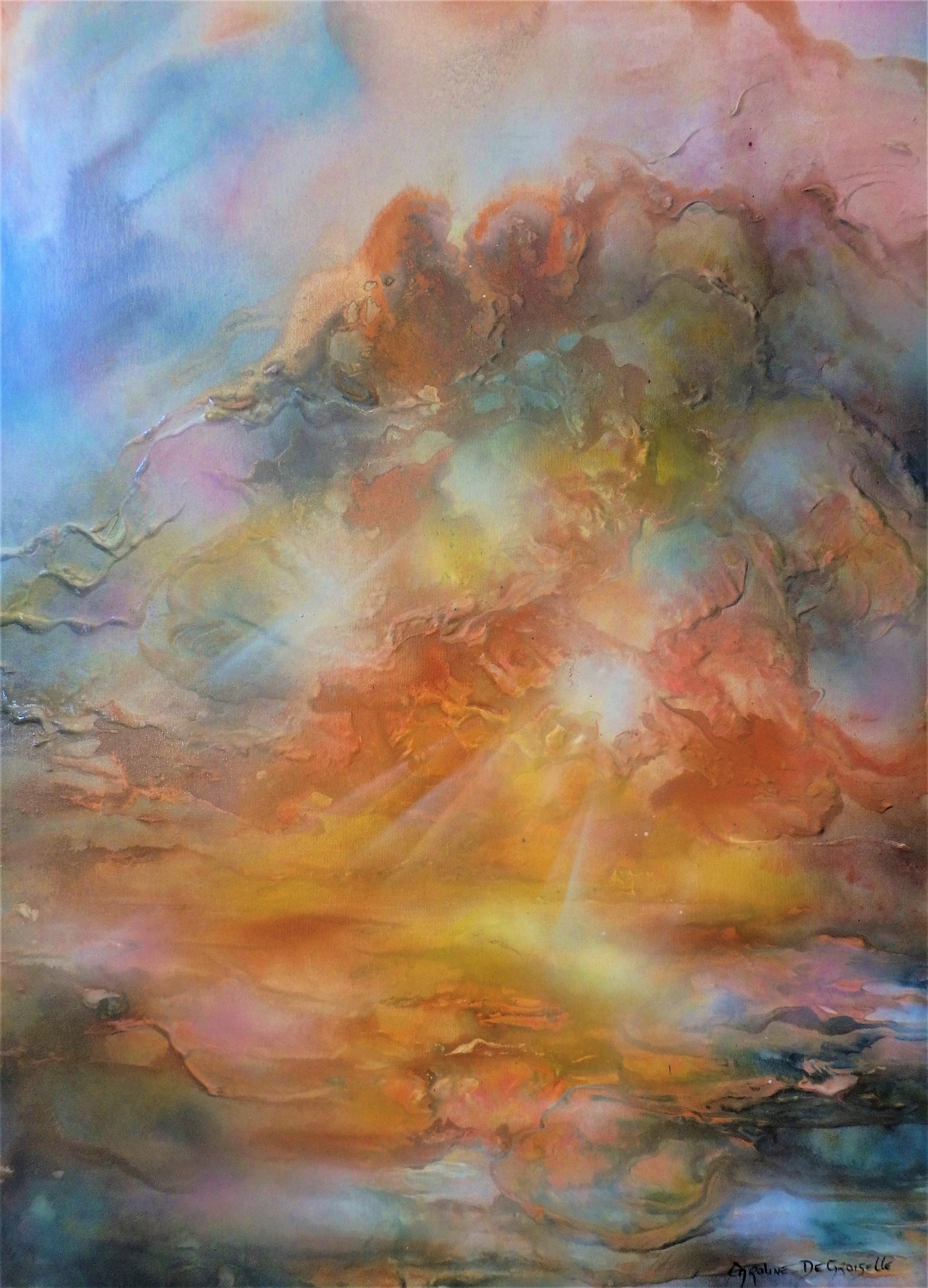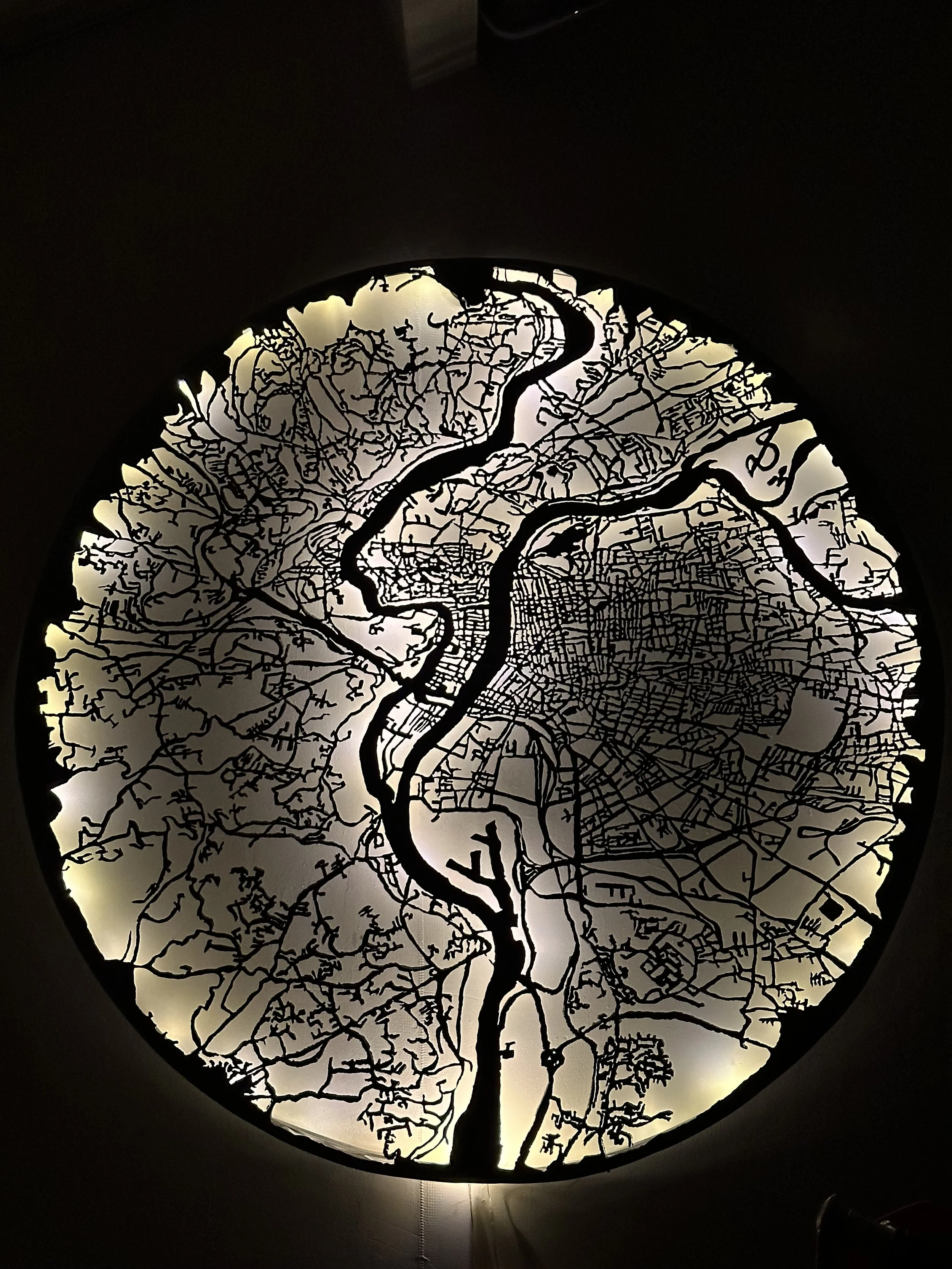Maria Aparici
To encounter Maria Aparici’s latest collection is to step into a battlefield where the canvas itself becomes the site of rebellion. This award-winning artist, whose roots trace back to Valencia—the land that birthed the great Joaquín Sorolla—uses her oil-on-canvas works to shatter conventions, challenging both aesthetic traditions and the cultural mores that define femininity in the modern world. Aparici's lineage and formal education, enriched by a sojourn in the United States, lend her work a striking duality: it is both a nod to classical mastery and a bold march into uncharted territories of abstraction, expressionism, and feminist ideology.
At first glance, Aparici’s work might appear dynamic and untamed—her brushstrokes bold and expressive, her figures strikingly unconventional. But closer inspection reveals an extraordinary depth and coherence. Each painting serves as a manifesto, a demand for a reckoning with the ways in which society has historically distorted, consumed, and commodified women’s bodies and identities. Through distortion and abstraction, Aparici achieves something remarkable: she articulates the inexpressible.
In her collection, the female form becomes a visual language of defiance. Take, for instance, the painting where a figure draped in red emerges from a storm of violent, tangled brushwork. Here, red is not just a color; it is a scream, a pulse, a declaration of life and rage. The figure, stretched and contorted, seems to exist in a liminal space between destruction and rebirth. Aparici invites us to see the grotesque not as a flaw, but as an inevitable consequence of the pressures society exerts on women. In doing so, she aligns herself with the legacy of Egon Schiele, whose angular, unvarnished depictions of the human body shocked the art world in the early 20th century. Yet Aparici takes this ethos further, layering her feminist critique with a profound psychological insight.
Aparici’s themes are deeply autobiographical, as her artist statement makes clear. She speaks of women’s bodies as "merchandise, admired or reviled, consumed or restricted without mercy." This sentiment is embodied in paintings where elongated limbs and disproportionate torsos seem to writhe against invisible shackles. In one particularly haunting work, two figures share a canvas, their bodies rendered in broad, gestural strokes that convey both intimacy and alienation. The palette—a juxtaposition of soft pastels and harsh reds—suggests both vulnerability and violence. It is a conversation between two women, or perhaps between the self and its fragmented reflection.
What sets Aparici apart from her contemporaries is her ability to imbue chaos with a sense of purpose. Her brushwork is wild but never careless; every stroke seems to carry the weight of centuries of repression and resistance. There is an emotional rawness to her work that recalls the Expressionists, yet her compositions are strikingly modern, engaging with contemporary feminist discourse. Aparici's art is not about beauty in the traditional sense. Instead, it redefines beauty as resilience, as the capacity to endure and transform.
Her portraiture, too, is arresting. A piece featuring a woman with piercing eyes and a striking red mouth is both confrontational and intimate. The heavy impasto and thick, almost sculptural application of paint give the work a physicality that draws the viewer in. This is not a face meant to please or to be consumed; it is a face that demands to be seen on its own terms. Aparici’s portraits stand as a rebuttal to the centuries-old tradition of the “male gaze” in art history. Here, the subject is not an object of desire but a fully realized individual, brimming with complexity.
As an artist, Aparici occupies a singular place in the contemporary art scene. Her work engages with the feminist tradition of artists like Louise Bourgeois, who used sculpture to explore themes of trauma and femininity, and with the bold abstraction of painters like Willem de Kooning. Yet Aparici’s voice is uniquely her own. In a world increasingly dominated by digital media and conceptual art, she insists on the tactile, visceral power of oil on canvas. This commitment to the physicality of painting feels almost radical in its refusal to conform to trends.
It is also worth noting the socio-political implications of Aparici’s work. In an era when women’s rights are once again under threat in many parts of the world, her paintings serve as a call to arms. By distorting the female form, she exposes the distortions imposed by patriarchal societies. Her figures, “twisted as if they were chewing gum,” as she describes them, are not victims but survivors. They howl from the canvas, refusing to be silenced.
Aparici’s exploration of the grotesque also carries a redemptive quality. By embracing what society deems “ugly” or “imperfect,” she challenges the very notion of perfection. This is particularly evident in a work where a pair of female figures, their forms nearly obliterated by abstraction, seem to dissolve into a swirl of color. It is as if Aparici is suggesting that identity, though fragile, cannot be erased. In the chaos of the painting, there is a quiet resilience.
The place of Maria Aparici in the art market is similarly noteworthy. Her works, already part of prestigious collections in Germany, Spain, and beyond, are increasingly sought after. In a market that often prioritizes spectacle over substance, Aparici’s paintings stand out for their intellectual rigor and emotional depth. Collectors and critics alike recognize her as a vital voice in contemporary art—a torchbearer for a new kind of feminist expressionism.
In comparing Aparici to a master of the past, one might think of Francisco Goya. Like Goya, Aparici is unflinching in her portrayal of the human condition. Both artists use distortion as a means of truth-telling, peeling back the layers of societal hypocrisy to reveal the raw, uncomfortable reality beneath. And like Goya, Aparici’s work is deeply human, filled with both anguish and hope.
Maria Aparici’s art matters because it forces us to confront uncomfortable truths. It asks questions that have no easy answers: What does it mean to be a woman in a world that commodifies and controls femininity? How can art serve as both a mirror and a weapon? In grappling with these questions, Aparici’s paintings do not offer solace; they offer something far more valuable—a call to action.
Aparici’s work is a testament to the power of art to transcend its medium. Her canvases are not just paintings; they are battlegrounds, diaries, and manifestos. They are as raw and complex as the lives they depict, and in their grotesque beauty, they remind us of the resilience of the human spirit.
Maria Aparici is not merely an artist; she is a force. Her work will not be ignored, and it will not be forgotten. In her hands, the canvas becomes a weapon, the brush a scalpel, and the act of painting a form of resistance. To see her work is to be challenged, moved, and ultimately transformed.
Maria Aparici’s work emerges as a profoundly evocative and boundary-pushing exploration of the human experience, anchored in a feminist critique of societal norms and perceptions. Her new collection is a testament to her mastery of oil-on-canvas, blending bold abstraction, vivid expressionism, and figurative distortion to create a deeply visceral experience. Each piece resonates with emotion, philosophy, and rebellion, pushing the boundaries of traditional artistic forms.
The hallmark of Aparici’s work lies in her daring manipulation of form and color. Her figures are intentionally distorted—elongated, shrunk, and stretched—echoing her artist statement's commitment to reflecting the psychological chaos of feminine identity under societal scrutiny. In Castagnetes in Spain , the red hues evoke passion and turmoil, while the figure’s fragmented form symbolizes the fractured identities imposed on women. Aparici’s use of color as an emotional and psychological tool is masterful, as each hue adds layers of meaning and provocation.
In her portrait Angela Molina, the textured layers of impasto create a tactile quality, inviting the viewer into an intimate dialogue with the subject. The portrait transcends traditional representation, focusing not on physical perfection but on emotional and psychological depth. The red lips, stark against the muted background, symbolize defiance and strength, encapsulating Aparici’s vision of reclaiming the female narrative.
The collection also showcases Aparici’s ability to juxtapose chaos and harmony. In Girls con Marco, bold and gestural strokes dance across the canvas, creating a vivid interplay between abstraction and form. The figures seem to exist both within and beyond the canvas, their identities blurred yet resilient. The chaotic arrangement of colors and forms embodies the psychological struggle of navigating societal expectations, yet there is an underlying harmony that speaks to the resilience and strength of the human spirit.
Last Night further emphasizes Aparici’s thematic focus on intimacy and vulnerability. The figures, intertwined and abstracted, convey a raw emotional connection that transcends the physical. Her ability to balance abstraction with recognizable forms allows her to capture the complexity of human relationships and emotions.
Aparici’s unique artistic language places her among the most compelling contemporary artists today. She draws comparisons to the likes of Willem de Kooning in her expressive abstraction and Egon Schiele in her bold representation of the human form. Yet, Aparici’s voice is distinctly her own, deeply rooted in her feminist ideology and personal narrative. Her art is not merely a reflection of societal critique; it is an act of defiance, a call to action, and a reimagining of what beauty and identity mean in the modern world.
Her place in the art scene is both pioneering and essential. In an age where digital art and conceptual minimalism dominate, Aparici’s commitment to the physicality and texture of oil painting feels refreshingly radical. Her work reminds us of the power of traditional mediums to convey profound and urgent messages.
Maria Aparici’s collection is not just art—it is a movement, a declaration of resilience, and a celebration of the complexity of human identity. Through her bold brushwork, vivid palette, and deeply philosophical approach, Aparici redefines the boundaries of contemporary art, creating works that will resonate with audiences for generations to come. Her ability to transform personal and societal struggles into universal visual language solidifies her place as one of the most important voices in today’s art world.
Face Lift is a striking exploration of societal pressure and the relentless pursuit of unattainable beauty standards. The figure, rendered in thick impasto, is characterized by exaggerated features that almost appear to warp under the strain of societal expectations. The heavily textured application of paint creates a visceral, almost sculptural effect, as though the subject is caught in the process of being reshaped or reconstructed. The stark contrast between the icy blues and warm flesh tones conveys an unsettling tension between humanity and artifice. Aparici’s mastery lies in how she can evoke empathy while simultaneously challenging the viewer to confront their complicity in perpetuating such ideals. This painting is as haunting as it is poignant, a visual commentary on the commodification of the female form.
In Balayage, Aparici takes the everyday—a hair treatment—and transforms it into a canvas of cultural critique. The painting captures a figure with elongated limbs and an abstracted posture, immersed in a swirl of gestural strokes that resemble cascading hair. Here, Aparici critiques the societal obsession with appearance and the lengths individuals go to fit into rigid beauty norms. The earthy tones in the background, contrasted with vibrant strokes of gold and auburn, create a layered narrative of natural beauty versus constructed ideals. The work is both celebratory and critical, a duality Aparici manages with great finesse.
Helen Mirren, This portrait of the iconic actress is an extraordinary example of Aparici’s ability to capture strength, dignity, and complexity within a single frame. The heavy textures and bold strokes lend the piece a palpable energy, while the choice of vibrant reds for the lips and subtle blues in the shadows convey both vitality and introspection. The profile view, with its elongated nose and striking gaze, seems to defy traditional standards of portraiture, much like Helen Mirren herself has defied conventional norms in her career. Aparici uses this piece to not just celebrate an individual, but to explore the themes of aging, wisdom, and beauty in a world that often disregards them. It is a powerful homage to resilience and individuality.
Aparici’s Moralities 2 delves into the intersection of identity, morality, and societal judgment. This large-scale piece features overlapping figures that seem to wrestle for space and attention amidst a cacophony of colors and strokes. The layering of bodies and the use of fragmented lines create a sense of psychological chaos, mirroring the moral dilemmas and societal pressures that individuals, particularly women, face. The palette shifts between soft pastels and harsh reds, suggesting both vulnerability and resistance. The distorted forms are not merely grotesque but deeply human, embodying the complexities of moral judgment and identity construction.
Illusion is a masterful exploration of perception versus reality. The central figure, draped in fragmented layers of color, appears to dissolve into the background, blurring the boundaries between self and environment. Aparici uses this interplay to critique how societal constructs create illusions of identity, particularly for women. The pale yellows and delicate blues evoke a dreamlike quality, while the sharp, black lines disrupt this serenity, symbolizing the intrusion of societal expectations. The title, Illusion, becomes a question: How much of what we see is shaped by cultural lenses? Aparici’s ability to pose such profound questions through her art is a testament to her intellectual depth and technical skill.
Last Night captures a sense of intimacy and vulnerability, rendered in Aparici’s signature style of distortion and abstraction. The overlapping bodies, their forms only partially discernible, evoke the fragility and complexity of human connection. The muted palette, interspersed with bursts of red, conveys a sense of quiet passion and lingering emotion. Aparici’s ability to convey both physicality and emotion through abstract forms is on full display here. Last Night feels deeply personal yet universal, a testament to her ability to tap into shared human experiences.
In Girls Con Marco, Aparici returns to themes of camaraderie and shared struggle. The figures, though abstracted, convey a palpable sense of connection and solidarity. The vibrant reds and yellows give the piece a celebratory tone, yet the distorted forms hint at the challenges these women face. The inclusion of a “marco” (frame) in the title seems to suggest the societal boundaries within which women are often confined. Aparici critiques these boundaries while celebrating the resilience and creativity that emerge within them.
Maria Aparici's body of work is far more than a collection of paintings; it is a profound and urgent conversation with the very fabric of society. Her canvases become battlegrounds where identity, morality, and societal expectations collide, and through her fearless exploration of distortion and abstraction, she reveals the fractures and truths that often remain hidden. Aparici’s art is an act of reclamation—a reclaiming of the female form, of cultural narratives, and of the power of painting itself in a contemporary world often dominated by fleeting trends and digital mediums.
Her work invites us to reflect on the tension between vulnerability and strength, chaos and harmony, beauty and grotesque. It challenges the viewer to move beyond passive admiration and engage with the deeper questions she poses: What defines identity? Who controls the narrative of beauty? And how can art ignite change? In confronting these questions, Aparici’s work does not seek to provide answers but instead encourages introspection and dialogue.
Maria Aparici's art transcends the boundaries of aesthetics. It is a mirror held up to society, reflecting both its flaws and its potential for transformation. Her unyielding commitment to truth, expressed through her masterful manipulation of form and color, establishes her not just as an artist but as a visionary—a force in contemporary art whose impact will resonate far beyond her time. Aparici reminds us that art is not just about what we see, but what it reveals within us, urging us to confront, to question, and to reimagine the world around us. Her legacy will be one of courage, authenticity, and an unflinching dedication to the pursuit of meaning.
By Marta Puig
Editor Contemporary Art Curator Magazine
ANGELA MOLINA actress .O/C,81x 65 cm ,2024
BALAYAGE.O/C,146 x 114 cm .2024
DLA+,O/C,146 x 114 cm . 2024
ILLUSION, O/C, 146 x 114 cm . 2024
HIDDEN MORALITIES, O/C , 146 x 114 cm , 2024
HELEN MIRREN, O/C, 40 x 40 cm ,2024
GIRLS, O/C,100 x 100 cm , 2024
FACE LIFT, O/C, 146 x 114 cm , 2024
CASTAGNETES IN S_PAIN , O/C 185 x 106 cm 2022
LAST NIGHT, O/C 146 x 114 cm,2024

